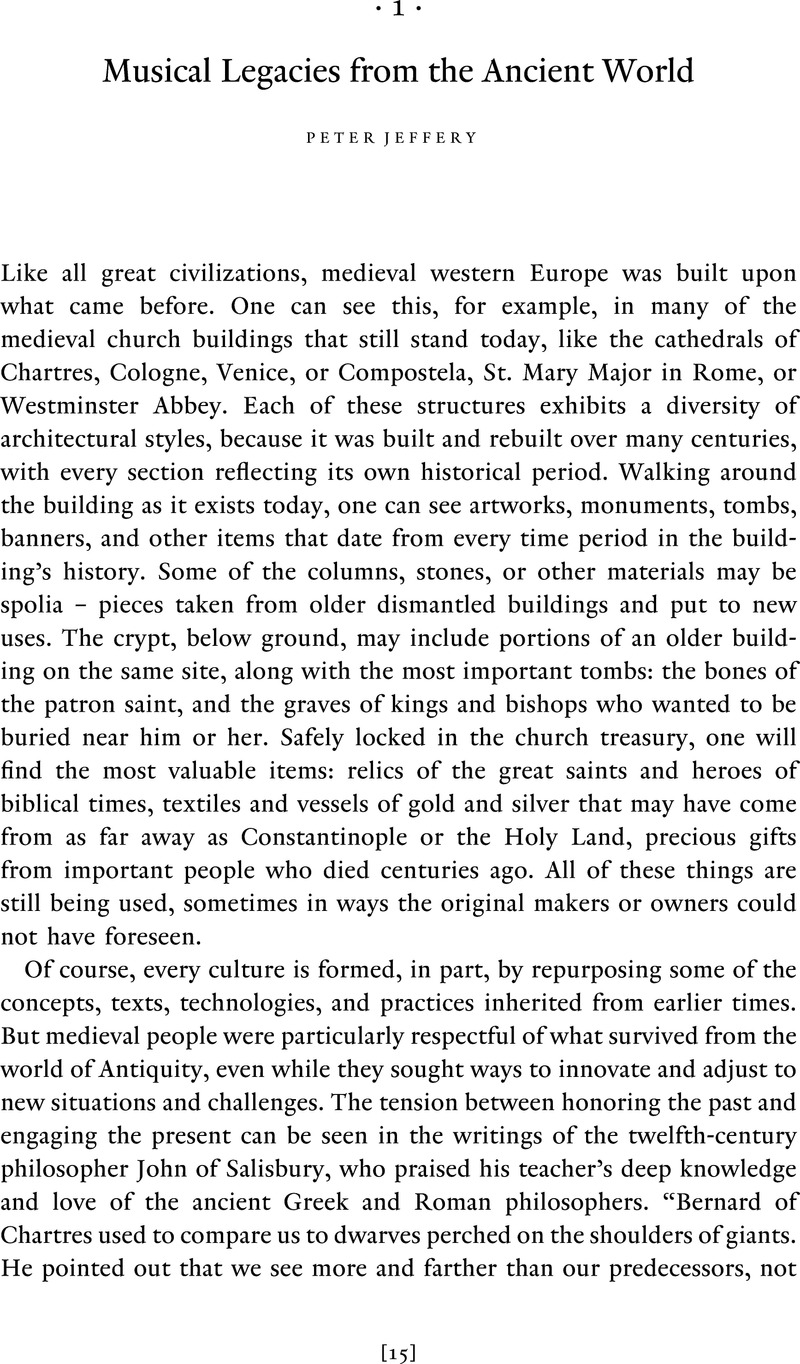Book contents
- The Cambridge History of Medieval Music
- The Cambridge History of Music
- The Cambridge History of Medieval Music
- Copyright page
- Contents
- Figures
- Music Examples
- Tables
- Notes on Contributors
- Acknowledgements
- Manuscript Sigla
- Abbreviations
- Volume I
- Introduction and Context
- 1 Musical Legacies from the Ancient World
- 2 Origins and Transmission of Franco-Roman Chant
- 3 Sources of Romano-Frankish Liturgy and Music
- 4 Regional Liturgies: Spanish, Beneventan, Gallican, Milanese
- 5 Nova Cantica
- 6 Music and Prosopography
- 7 The Silence of Medieval Singers
- 8 Notation I
- 9 Tropes
- 10 Sequence
- 11 Music Theory
- 12 Vernacular Song I: Lyric
- 13 Vernacular Song II: Romance
- 14 Instruments and Their Music
- 15 Teaching and Learning Music
- 16 Music in Drama
- 17 The Sources
- 18 The Revival of Medieval Music
- 19 Medieval Performance Practice
- 20 Issues in the Modern Performance of Medieval Music
- Volume II
- Index
- References
1 - Musical Legacies from the Ancient World
from Volume I
Published online by Cambridge University Press: 04 August 2018
- The Cambridge History of Medieval Music
- The Cambridge History of Music
- The Cambridge History of Medieval Music
- Copyright page
- Contents
- Figures
- Music Examples
- Tables
- Notes on Contributors
- Acknowledgements
- Manuscript Sigla
- Abbreviations
- Volume I
- Introduction and Context
- 1 Musical Legacies from the Ancient World
- 2 Origins and Transmission of Franco-Roman Chant
- 3 Sources of Romano-Frankish Liturgy and Music
- 4 Regional Liturgies: Spanish, Beneventan, Gallican, Milanese
- 5 Nova Cantica
- 6 Music and Prosopography
- 7 The Silence of Medieval Singers
- 8 Notation I
- 9 Tropes
- 10 Sequence
- 11 Music Theory
- 12 Vernacular Song I: Lyric
- 13 Vernacular Song II: Romance
- 14 Instruments and Their Music
- 15 Teaching and Learning Music
- 16 Music in Drama
- 17 The Sources
- 18 The Revival of Medieval Music
- 19 Medieval Performance Practice
- 20 Issues in the Modern Performance of Medieval Music
- Volume II
- Index
- References
Summary

- Type
- Chapter
- Information
- The Cambridge History of Medieval Music , pp. 15 - 68Publisher: Cambridge University PressPrint publication year: 2018

